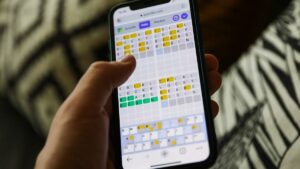While the finer points of running a social media business can be debated, one basic truth is that they all run on attention. Tech leaders are incentivized to grow their user bases so there are more people looking at more ads for more time. Itâs just good business.
As the owner of Twitter, Elon Musk presumably shared that goal. But he claimed he hadnât bought Twitter to make money. This freed him up to focus on other passions: stopping rival tech companies from scraping TwitÂterâs data without permissionâeven if it meant losing eyeballs on ads.
Data-scraping was a known problem at Twitter. âScraping was the open secret of Twitter data access. We knew about it. It was fine,â Yoel Roth wrote on the Twitter Âalternative Bluesky. AI firms in particular were noÂtorious for gobbling up huge swaths of text to train large language models. Now that those firms were worth a lot of money, the situation was far from fine, in Muskâs opinion.
In November 2022, OpenAI debuted ChatGPT, a chatbot that could generate convincingly human text. By January 2023, the app had over 100 million users, making it the fastest Âgrowing consumer app of all time. Three months later, OpenAI secured another round of funding that closed at an astounding valuation of $29 billion, more than Twitter was worth, by Muskâs estimation.
OpenAI was a sore subject for Musk, whoâd been one of the original founders and a major donor before stepping down in 2018 over disagreeÂments with the other founders. After ChatGPT launched, Musk made no secret of the fact that he disagreed with the guardrails that OpenAI put on the chatbot to stop it from relaying dangerous or insensitive inforÂmation. âThe danger of training AI to be wokeâin other words, lieâis deadly,â Musk said on December 16, 2022. He was toying with starting a competitor.
Near the end of June 2023, Musk launched a two-part offensive to stop data scrapers, first directing Twitter employees to temporarily block âlogged out view.â The change would mean that only people with Twitter accounts could view tweets.
âLogged out viewâ had a complicated history at Twitter. It was rumored to have played a part in the Arab Spring, allowing dissidents to view tweets without having to create a Twitter account and risk compromising their anonymity. But it was also an easy access point for people who wanted to scrape Twitter data.
Once Twitter made the change, Google was temporarily blocked from crawling Twitter and serving up relevant tweets in search resultsâa move that could negatively impact Twitterâs traffic. âWeâre aware that our ability to crawl Twitter.com has been limited, affecting our ability to display tweets and pages from the site in search results,â Google spokesperson Lara Levin told The Verge. âWebsites have control over whether crawlers can access their content.â As engineers discussed possible workarounds on Slack, one wrote: âSurely this was expected when that decision was made?â
Then engineers detected an âexplosion of logged in requests,â according to internal Slack messages, indicating that data scrapers had simply logged in to Twitter to continue scraping. Musk ordered the change to be reversed.
On July 1, 2023, Musk launched part two of the offensive. Suddenly, if a user scrolled for just a few minutes, an error message popped up. âSorry, you are rate limited,â the message read. âPlease wait a few moments then try again.â




















+ There are no comments
Add yours